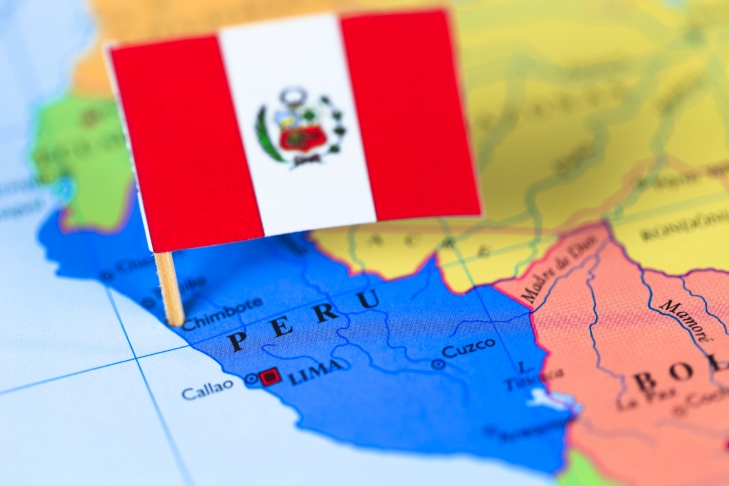
South America’s third-largest economy seeks to capitalise on growing global trade
When the 12 nations that made up the Trans-Pacific Partnership (TPP) finally agreed to the terms of the free trade deal on October 6, 2015, it prompted varied responses. American President Barack Obama hailed the TPP, saying it will help the U.S. “export more products stamped ‘Made in America’ all over the world that supports higher-paying American jobs”. Less enthused was U.S. presidential candidate Bernie Sanders, who predicted the opposite, saying it will “hurt consumers and cost American jobs”.
Among the other TPP countries, New Zealand Prime Minister John Key expressed hope for TPP to boost his country’s economy but was left disappointed by unsuccessful attempts to deliver more perks to the Kiwi dairy industry. Singaporean Trade and Industry Minister Lim Hng Kiang was all praise for the deal, saying the TPP will “encourag(e) greater investment and address new trade challenges in the modern economy”.
Peru, one of only two South American countries – the other being Chile – in the TPP, could increase its exports by US$3.2 billion by 2025, according to the American Chamber of Commerce in Peru. Being a part of the TPP, says the Peruvian ambassador to Singapore, is in line with how South America’s third largest country is developing its economy.
“We see Asia as the future, and that’s why we have promoted the creation of the Pacific Alliance with Mexico, Chile and Colombia, and we are active members of APEC and the TPP,” says Ambassador Manuel Talavera Espinar. And he adds, “In the last 10 years, we have negotiated free trade agreements with important countries of this region such as China, Japan, Singapore, South Korea and Thailand.
“Traditionally Peru had diplomatic representations in Japan, China, South Korea and India. However, early on, we realised the prospects of Asia in the world economy. That is why since the 90’s we’ve expanded our diplomatic network in the area, opening Embassies in Vietnam, Singapore, Thailand, Malaysia and Indonesia, thus consolidating our presence in this part of the world.”
Economic matters
There is much room for Peru to grow its trade with Asia. Asia used to be viewed as “just China and Japan” from Peru’s economic standpoint, says Ambassador Talavera. Currently, China is Peru’s biggest trading partner, overtaking the United States. Peru’s economy reflects its varied geography: an abundance of mineral resources found mainly in the Andes mountains, as well as fishing stocks along its extensive maritime territory have traditionally been the foundations of Peru’s economy.
“One area of competitive advantage for Peru lies in its mining sector, with the production of copper, gold and silver being especially important. We have also been developing manufacturing facilities to service the mining industry and we are exporting this expertise to Bolivia, Ecuador, and Chile,” adds the Ambassador.
"We see Asia as the future, and that’s why we have promoted the creation of the Pacific Alliance with Mexico, Chile and Colombia, and we are active members of APEC and the TPP." - Manuel Talavera Espinar, Peruvian Ambassador to Singapore
Soft commodity prices have hit the Peruvian economy, which grew just 2.4 percent in 2014 after averaging over six percent in the four years prior. The slowdown is the worst since 2009 when the Global Financial Crisis limited GDP growth to only 0.9 percent – a big drop from the nearly 10 percent expansion from a year before.
Even so, the Peruvian economy is on track to recover and grow at rates of around three percent for 2015 and five percent for 2016 according to PROINVERSION, the Peruvian government’s agency in charge of investment promotion. The bright prospect of Peru’s economy is based on strict adherence to macroeconomic prudence, as well as mining production and the construction of mega infrastructure projects in the next years.
Lessons of history
Peru, like most Latin American economies in the post-World War II period, pursued a strategy of import substitution. Botched economic reforms and mismanagement led to hyperinflation in the late eighties where annual inflation shot up to over 3,000 percent in 1989 before peaking at a staggering 7,481 percent in 1990.
“First, the government eliminated subsidies,” says Ambassador Talavera, recalling the stabilisation process that reined in hyperinflation. The administration then opened the domestic market in order to foster competition, which, in time, brought prices to their real levels.
“With a big crisis, you have also a big opportunity to implement great changes. That’s what happened to us,” says the Ambassador.
The implementation of a neoliberal strategy during the first half of the Fujimori government (1990-2000) tamed inflation: by 1995 it was at 11 percent; it would dip as low as 3.5 percent before Fujimori was ousted in a corruption scandal. Have the tough economic lessons been learnt?
“Now, our rules are very clear,” the Ambassador states. “For example, regarding fiscal deficits, the government cannot spend more financial resources than the level of tax collection. Also, Peru’s Central Bank is an independent institution in charge of controlling the money supply in the economy. Therefore, there is a plurality of authorities – that include the Congress – which collectively control the monetary and budgetary polices.”
He adds, “The Peruvian economy has experienced significant growth over the last ten years, mainly due to its continuous stable policies that have enabled it to promote private investment and boost the growth of the domestic market, while developing at the same time a clear policy of commercial integration. Simultaneously, the Peruvian democracy has received the support of the population.
“Therefore, the positive outlook of Peru in economic and political matters makes it a reliable partner for Singapore and Asia in general.”
Manuel Talavera Espinar is the Peruvian ambassador to Singapore. He was the speaker at the SMU Wee Kim Wee Centre talk “The Peruvian Economic Growth 1990-2014” on October 1, 2015.
Follow us on Twitter (@sgsmuperspectiv) or like us on Facebook (https://www.facebook.com/PerspectivesAtSMU)
Last updated on 23 Oct 2017 .